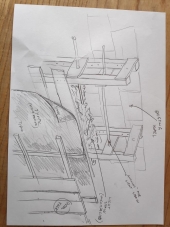Thanks for the reply. Longer may result in stronger walls than short. But how much difference and what is "long", or short for that matter. I just can't seem to find any sites that have actually tested different lengths. What would be optimum length?
As for r values, I think you could get similar r values with long or short. Probably with short you would have to be careful about over doing the compression. Shorter straw would probably compress easier than long. But this is all conjecture.
I know that for plasters short is better so I want some short for that.
My main dilemma is that once I receive the straw, that's pretty much how I'll have to use it as most of the labour will be me alone so I can't afford to be spending time chopping it if I ask for the wrong length. And of course I can't uncut the straw.
On this site
http://endeavourcentre.org/2016/04/light-clay-straw-insulation/
they say "chopped straw, ideally 1-6 inches"
On this site
http://mudstrawlove.com/natural-building-101/
They say "long".
Unfortunately I won't have time to do any tests until after delivery.
I'm finding similar advocates for both on other sites too. Hmm, what to do...









